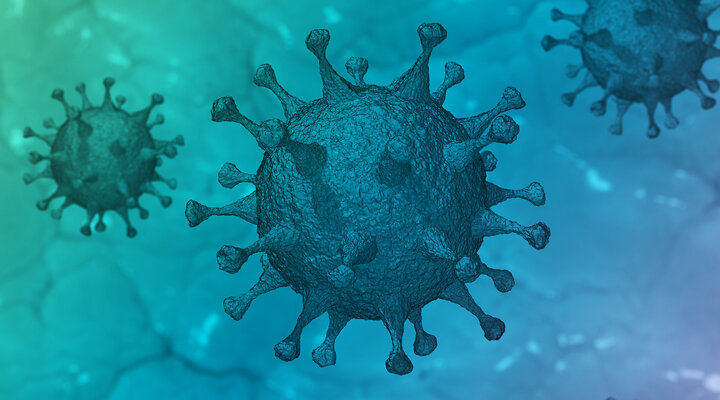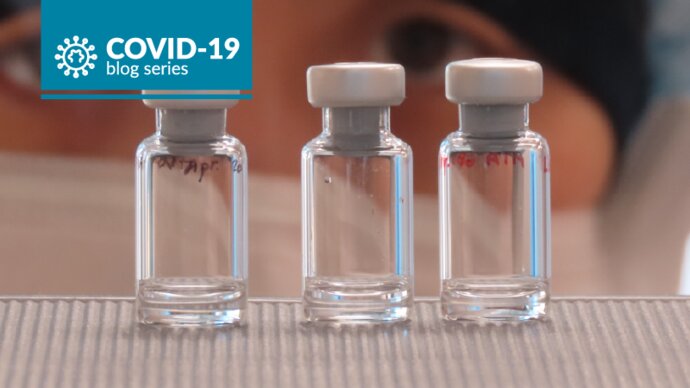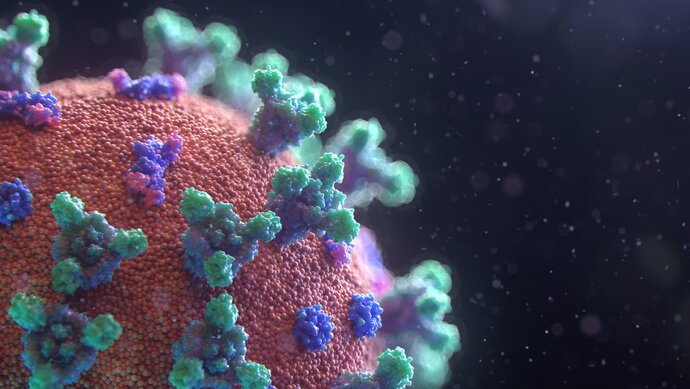COVID-19 vaccination: lessons to be learned from veterinary coronavirus vaccines
by Dr Michael James Francis, BioVacc Consulting Ltd, Amersham, United Kingdom
Any significant move away from the current situation of social distancing and lockdown, and return to ‘normality’, in response to the ongoing COVID-19 pandemic is likely to require an effective antiviral drug treatment or mass vaccination.
As of 30 April 2020, the World Health Organisation (WHO) reports that there are 102 vaccines in development against the SARS-CoV-2 virus and that eight of these potential candidates are already in human clinical trials.
What is even more remarkable is that these vaccines are utilising four different vaccine technologies (conventional inactivated, virus vectored, DNA delivery and mRNA delivery). We now await the outcome of these critical phase 1 and phase 2 trials in terms of safety and efficacy data, although the latter will require a significant number of virus exposures in a climate diminishing disease.
Having said that, the first encouraging signs that protective immunity may be possible have come from primate challenge studies using the inactivated whole virus vaccine from China and an adenovirus-vectored ChAdOx1 nCoV-19 vaccine from the Jenner Institute in the United Kingdom. Both studies have shown that the vaccines can elicit an immune response in rhesus macaques that will provide protection against a subsequent highly virulent viral challenge. These encouraging results demonstrate the value of relevant animal models in the evaluation of a new human vaccine’s safety and efficacy. With this in mind it is interesting to consider what we can learn from existing veterinary coronavirus vaccines.
Veterinary coronaviruses
In addition to potential wildlife reservoirs of coronavirus infection (eg bats, civet cats, pangolins, mice, rats, etc), there are a number of animal coronaviruses which infect livestock (cattle, swine, poultry, camels) and companion animals (dogs, cats). These viruses cause a range of diseases which predominately result in respiratory symptoms or gastroenteritis. Successful commercial vaccines have been developed for the majority of these veterinary coronavirus diseases. There are lessons to be learned from these successes and also from diseases that have proved to be more problematic.
Bovine coronavirus (BCoV)
BCoV belongs to the genus Betacoronavirus, family Coronaviridae, and it was first described in the United States by Mebus et al in 1972. It is associated with neonatal calf diarrhoea and newborn calves are affected by acute diarrhoea with extensive destruction of absorptive intestinal epithelium leading to dehydration and potentially death.
Successful vaccines have been developed based on inactivated and adjuvanted whole virus technologies (eg Rotavec Corona and Lactovac). These vaccines also incorporate antigens from bovine rotavirus and E. coli. They are licensed for the active immunisation of pregnant cows and heifers to raise protective virus neutralising antibodies. The antibodies produced are fed to calves during the first few weeks of life to reduce disease through passive immunity. This protection will persist as long as the calves are fed stored colostrum or allowed to naturally suckle from their mother. Thus, it is clear in this case that the anti-coronavirus neutralising antibodies which are predominately directed at the virus spike proteins can provide protective immunity through passive transfer and ongoing mucosal administration.
Transmissible gastroenteritis virus of swine (TGEV)
TGEV belongs to the genus Alphacoronavirus, family Coronaviridae, and it was first described in the US by Doyle and Hutchings in 1946. It causes a fatal disease in young pigs characterised by a short incubation period of 12-18 hours followed by acute diarrhoea, vomiting, dehydration and often death after 5-7 days. Acute infection of the upper respiratory tract may also occur in sows.
A vaccine containing attenuated live TGE virus and two major rotavirus serotypes in desiccated form has been developed (ProSystem TGE/Rota). All three viruses have been modified so that they do not cause disease in young piglets and pregnant swine. This vaccine is licensed for use in healthy pregnant swine as an aid in the prevention and control of rotaviral diarrhoea and TGE in their nursing piglets. The vaccine can either be delivered by intramuscular injection or by using a combination of an oral prime given to pregnant sows at five and three weeks before farrowing, followed by an intramuscular boost at one week before farrowing. Thus, once again, it is clear that protection is being provided though passive immunity derived from the sow’s anti-coronavirus antibodies. This also provides an interesting example as to how a prime-boost regimen using two different routes of delivery can be used to qualitatively improve the immune response within the sow.
Avian infectious bronchitis virus (IBV)
IBV belongs to the genus Gammacoronavirus, family Coronaviridae, and the respiratory disease was first described by Schalk and Hawn in the US in 1931. Subsequently the viral cause was established by Beach and Schalm in 1936. It is a major pathogen of chickens and causes an acute respiratory disease followed by a reduction in both the quantity and quality of egg production.
Live vaccines, which can be attenuated through passage in embryonated chicken eggs, have been developed using a variety of virus strains with differing pathologies (M41, H120, H52, Ma5, 4/91, D388, etc). The various antigenic types do not generally induce significant cross-protection and this makes it extremely important that the appropriate vaccine(s) is chosen for protection of a particular flock of birds.
The vaccines are administered topically through drinking water, aerosol spray or oculo-nasally, and examples of marketed products include the trade names Nobilis and Poulvac. They are initially given to one- to 14-day-old chicks, and birds are commonly revaccinated approximately two weeks after the initial vaccination. It is interesting to note that revaccination with a different coronavirus strain can induce broader protection. The vaccines can be used in breeders and layers to prevent egg production losses, as well as to pass protective maternal antibodies to progeny. Thus, in this case antibodies that appear to be directed against the coronavirus spike protein are also critical in providing protective immunity, although a role for cell mediated immunity cannot be ruled out. It has been shown that major histocompatibility complex restricted cytotoxic T-lymphocytes (CTL) are responsible for early control of IBV infection. The kinetics of viral load observed in the lungs and kidneys correlates with the level of IBV-specific CTL activity of effector cells prepared from spleens of infected chicks. Furthermore, the adoptive transfer of immune T cells to chicks prior to infection has shown that IBV primed CD8+ve T lymphocytes can protect chicks from acute infection. In addition, the correlation between IBV vaccine type and protection is imperfect, and selection of the most appropriate vaccine, or combination of vaccines, may require experimental assessment in vivo for an optimal immunization schedule to be developed.
Canine coronavirus (CCV)
CCV belongs to the genus Alphacoronavirus, family Coronaviridae and it was first described in Germany by Binn et al in 1971. The onset of disease is sudden and involves vomiting, depression, loss of appetite, non-haemorrhagic diarrhoea, and dehydration. This enteric disease can sometimes be fatal in young puppies.
A licensed vaccine has been developed, which comprises an inactivated feline enteric coronavirus (FECV), antigenically similar to enteric CCV, adjuvanted with aluminium hydroxide. This is generally formulated in combination with other canine pathogens including attenuated distemper virus, adenovirus, parvovirus and parainfluenza virus, and inactivated leptospirosis antigens. The multivalent vaccine can be administered by injection to puppies from six weeks of age and then a second dose is given three to four weeks later, but not before 10 weeks of age due to the potential risk of suppression by maternally derived antibodies. A single booster dose is then recommended at 12-month intervals. The vaccine will elicit circulating neutralising antibodies, reduce the level of viral infection and aid in the prevention of clinical disease.
Recently, a second type of canine coronavirus (group II) has been shown to cause respiratory disease in dogs. Known as canine respiratory coronavirus (CRCoV) and found to be similar to strain OC43 of bovine and human coronaviruses, it was first isolated in the United Kingdom in 2003 from lung samples of dogs (Erles et al 2003). No vaccine is currently licensed against this new respiratory coronavirus.
Feline infectious peritonitis virus (FIPV)
FIPV belongs to the genus Alphacoronavirus, family Coronaviridae. It was first described by Holzworth in 1963, and it wasn’t until 1970 that Ward identified a virus in the US, similar to known coronaviruses, as the pathogen causing the disease. It is related to feline enteric coronavirus (FECV), and early signs of FIP are usually vague with a fluctuating fever, lethargy and inappetence being common. In most cases of FIP, once clinical signs have begun to develop they tend to get progressively worse over time, and generally result in deteriorating disease to the point that euthanasia is usually required. Two main forms of the disease are known as ‘wet’ or ‘effusive’ disease, and ‘dry’ or ‘non-effusive’ disease. The spike (S) protein of FIPV has been identified as critical for efficient macrophage infection and a chimeric virus in which the S protein of FECV replaces that of FIPV displays a reduced ability to infect macrophages. Furthermore, an imbalance between the T-cell and B-cell immune responses has been suggested as one reason for the inability of cats to resist FIPV infection.
Many approaches to develop an FIP vaccine have been attempted in the past and one of the most cautionary results comes from a recombinant vaccinia virus-encoded FIPV S protein approach, which resulted in early death in cats. In addition, a membrane and nucleocapsid protein DNA vaccine failed to protect cats against FIP, indicating that the surface S protein is likely to be important, and this study also demonstrated that IL-12 may produce adverse effects when used as a cytokine adjuvant.
Data presented by Scott et al (1992) indicated that the ability of an FIP vaccine to protect cats against experimental challenge is dependent upon the strain and particularly the dose of challenge virus. Low dose exposure resulted in protection of more than 50 percent of vaccinated cats, while higher dose exposure resulted in virtually no protection and induced accelerated FIP in many cases as a result of antibody-dependent enhancement (ADE). A further study identified the sites on FIP spike protein which mediate the ADE using monoclonal antibodies.
The only currently licensed vaccine against FIP, called FELOCELL, is an attenuated, temperature-sensitive strain of FIP virus propagated on an established feline cell line. This is administered by intranasal (IN) vaccination of healthy cats to 16 weeks of age or older, as an aid in preventing FIP disease.
Conclusions
It can be seen from the summaries above that there are a number of veterinary coronavirus diseases for which licensed vaccines are available. So what are the key lessons that we can learn from these veterinary coronavirus vaccines?
- Both killed (inactivated) and live (attenuated) whole virus vaccine strategies have been successfully employed to develop commercial coronavirus vaccines.
- Virus-neutralising antibodies directed to the surface spike (S) protein play a major role in protective immunity.
- T-cell responses may also be involved in protective immunity viral clearance but they are unlikely to be the prime mode of protection for a vaccine.
- Maternal antibodies and mucosal immunity play an important role in protection against enteric coronavirus infections.
- Immune responses can be qualitatively improved by an oral prime and intra-muscular boost strategy.
- Cross protective immunity can be developed by either combining vaccine strains within a vaccine or using a prime boost strategy with differing coronavirus strains.
- Heterologous vaccines using a related coronavirus from one species can be used to vaccinate another species.
- Vaccine-induced immunity is likely to last for at least 12 months and annual boosters are required in order to maintain protective levels of immunity.
- Those developing novel coronavirus vaccines should be aware of the potential risk of ADE induction leading to enhanced disease.
Thus, we can see that coronavirus vaccines can be successfully developed against a range of veterinary diseases using differing technologies and immunization strategies. These existing vaccines provide us with useful data and the lessons from veterinary medicine should prove of some value in our hunt for a successful vaccine against COVID-19.





